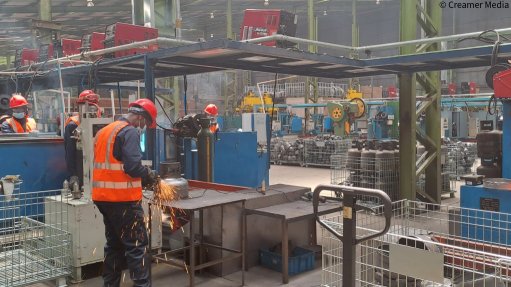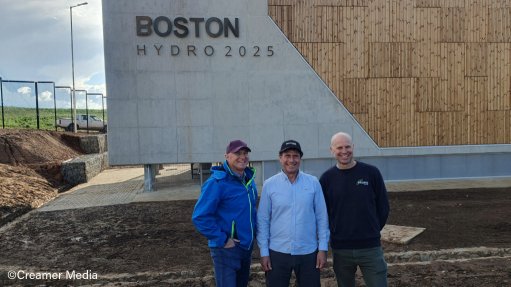Holistic architecture, sustainable design shaping future of green buildings
In the pursuit of creating sustainable and eco-friendly buildings, architects and organisations are focusing on key principles that promote holistic architecture and sustainable design.
According to hydrogen fuel cell developer Mitochondria marketing manager Kutama Ramano, these principles include considering holistic architecture, a sustainable and efficient design, as well as looking to see how one can “work better with energy and the elements of nature”.
Ramano emphasises the importance of sustainable and efficient design, which takes into account factors such as landforms, topography, vegetation, wind and light ventilation, adding that “exploring ways to harness the energy and elements of the natural world, such as the sun, water, wind, and earth” are some of the key principles to consider when designing and constructing green buildings or implementing eco-friendly practices in the industry.
Mitochondria project development engineer Nkosikhona Nzimande, meanwhile, highlights the significant strides made by commercial properties in embracing green building standards.
Many organisations have invested substantially in upgrading existing buildings to meet sustainable requirements, including the implementation of green energy technologies, efficient waste management, and responsible water usage.
“These efforts demonstrate a shift towards a net-zero focus, where buildings aim to mimic nature and prioritise the well-being of both occupants and the environment,” Nzimande says, adding that commercial properties, in particular, have made the most strides in sustainable development, with many firms investing significantly in upgrading existing buildings to meet green building standards.
While progress has been made in building design and green energy utilisation, Ramano acknowledges that organisations still have on the whole to go beyond compliance and embrace sustainability as a core principle.
“At Mitochondria, sustainability is a core principle of our organisation, and everything we do takes into consideration the impact on the ecosystems which we live within,” Ramano says, noting that this mindset is one the organisation “hopes to see other organisations strive to adopt”.
Ramano emphasises that sustainability should not be seen as optional but rather foundational to the well-being of people and the systems in which they operate.
Despite the advancements in the industry, both Ramano and Nzimande recognise that socioeconomic factors present challenges in fully integrating sustainable practices.
Implementing sustainability interventions can be costly, often comprising a significant portion of construction expenses, Nzimande says.
“Sustainable materials are not widely or locally available and need to be imported, which also drives up cost. Local adaptation of the materials is unavailable as well.”
Additionally, a skills gap exists in sustainable development, hindering the implementation of advanced solutions. Mitochondria is exploring dry sanitation for its manufacturing facility but faces barriers owing to the lack of local expertise in this area.
Meanwhile, commenting on collaboration and partnerships, Ramano emphasises the interconnectivity of stakeholders in the pursuit of sustainability, as “stakeholders cannot operate in isolation” as non-governmental organisations, private organisations, and the government all play vital roles.
“Collaboration is essential, and stakeholders must work together to protect ecosystems, drive education, provide sustainable solutions, and legislate for sustainability,” Ramano notes, adding that raising awareness and education are key factors in driving sustainable practices.
Nzimande further highlights the importance of inculcating an understanding of sustainability at the school level can cultivate a generation that actively embraces sustainability principles. Teaching, campaigns and webinars can contribute to increased visibility and understanding of sustainability beyond its association with climate change, Nzimande says.
Promoting Sustainable Practices
Various tools and certifications play a crucial role in promoting sustainable practices in the construction industry.
The Green Star certification, developed by the Green Building Council of South Africa, recognises and rewards environmental leadership in the property industry.
This certification enables organisations to assess their environmental performance and improve their sustainability measures. Environmental, social and corporate governance (ESG) reporting is another tool that organisations use to develop holistic strategies that balance growth, environment and society, Ramano says.
Ramano adds that Energy Performance Certificates (EPC) and the Carbon Tax Act in South Africa further incentivise organisations to improve energy efficiency and reduce carbon emissions.
Technology plays a significant role in driving such sustainability across various industries, Nzimande says.
Mitochondria's fuel cell technology, for example, offers environmental savings by producing little to zero carbon emissions.
Nzimande emphasises that technological advancements, not least in the emerging green hydrogen economy, will accelerate the journey towards achieving net-zero emissions, with “the increasing focus on net-zero targets a driving force behind sustainability practices”, and “prompting organizations to act swiftly and work towards a sustainable future”.
Article Enquiry
Email Article
Save Article
To advertise email advertising@creamermedia.co.za or click here
Comments
Press Office
Announcements
What's On
Subscribe to improve your user experience...
Option 1 (equivalent of R125 a month):
Receive a weekly copy of Creamer Media's Engineering News & Mining Weekly magazine
(print copy for those in South Africa and e-magazine for those outside of South Africa)
Receive daily email newsletters
Access to full search results
Access archive of magazine back copies
Access to Projects in Progress
Access to ONE Research Report of your choice in PDF format
Option 2 (equivalent of R375 a month):
All benefits from Option 1
PLUS
Access to Creamer Media's Research Channel Africa for ALL Research Reports, in PDF format, on various industrial and mining sectors
including Electricity; Water; Energy Transition; Hydrogen; Roads, Rail and Ports; Coal; Gold; Platinum; Battery Metals; etc.
Already a subscriber?
Forgotten your password?
Receive weekly copy of Creamer Media's Engineering News & Mining Weekly magazine (print copy for those in South Africa and e-magazine for those outside of South Africa)
➕
Recieve daily email newsletters
➕
Access to full search results
➕
Access archive of magazine back copies
➕
Access to Projects in Progress
➕
Access to ONE Research Report of your choice in PDF format
RESEARCH CHANNEL AFRICA
R4500 (equivalent of R375 a month)
SUBSCRIBEAll benefits from Option 1
➕
Access to Creamer Media's Research Channel Africa for ALL Research Reports on various industrial and mining sectors, in PDF format, including on:
Electricity
➕
Water
➕
Energy Transition
➕
Hydrogen
➕
Roads, Rail and Ports
➕
Coal
➕
Gold
➕
Platinum
➕
Battery Metals
➕
etc.
Receive all benefits from Option 1 or Option 2 delivered to numerous people at your company
➕
Multiple User names and Passwords for simultaneous log-ins
➕
Intranet integration access to all in your organisation

















